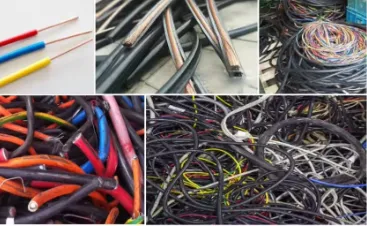

ພ.ຈ. . 03, 2024 17:56 Back to list
Eddy Current Waste Separation Revolutionizing Recycling
The growing concern over waste management and environmental sustainability has led to an increased focus on innovative technologies. One of the most intriguing methods recently emerging in waste separation is the use of eddy currents. This technology, primarily used in recycling facilities, plays a crucial role in sorting non-ferrous metals from mixed waste streams, thereby enhancing the efficiency of recycling systems.
Eddy Current Waste Separation Revolutionizing Recycling
One of the primary advantages of eddy current separation is its ability to distinguish between different types of non-ferrous metals, such as aluminum and copper, tiny but significant in a recycling context. Traditional separation methods often rely on labor-intensive manual sorting, which can lead to inefficiencies and increased labor costs. Eddy current systems automate this process, maximizing throughput while minimizing human error. This automation is particularly critical in our fast-paced world, where efficiency and speed are paramount.

Moreover, the eddy current separator is not only efficient but also environmentally friendly. By increasing the recovery rates of metals, it reduces the need for mining and processing virgin materials, which are energy-intensive and environmentally damaging processes. In this sense, eddy current technology not only supports recycling efforts but also contributes to broader sustainability goals. It aligns perfectly with the concept of a circular economy, wherein resources are reused and repurposed, minimizing waste and conserving natural resources.
Despite its advantages, implementing eddy current separation technology does come with challenges. Initial investment costs can be high, and facilities must ensure that they have the proper infrastructure to support this advanced machinery. Furthermore, the separator's performance can be affected by the design and configuration of the equipment, the type of materials being sorted, and their physical properties. Continuous technological improvements and research are essential to optimize these systems and address the varying complexities of waste streams.
Eddy current separation technology is becoming increasingly essential in various applications beyond traditional recycling. It has found use in the automotive industry for the recovery of metals in end-of-life vehicles, in construction for processing scrap materials, and even in e-waste recycling. As consumers demand more efficient recycling processes and policymakers push for stricter waste management regulations, the adoption of eddy current separation is expected to rise.
In conclusion, eddy current waste separation represents a significant advancement in recycling technology. By enhancing the efficiency of metal recovery, reducing the demand for virgin materials, and promoting a sustainable future, it plays a crucial role in modern waste management strategies. As countries and industries emphasize the importance of sustainability, technologies like eddy current separation will undoubtedly pave the way for more effective recycling solutions, benefiting both the environment and the economy in the long run.
Latest news
Troubleshooting Common Eddy Separator Problems
NewsJul.04,2025
The Role of Metal Recycling Plants in Circular Economy
NewsJul.04,2025
The Impact of Recycling Line Pickers on Waste Management Costs
NewsJul.04,2025
Safety Features Every Metal Shredder Should Have
NewsJul.04,2025
How Industrial Shredders Improve Waste Management Systems
NewsJul.04,2025
How Cable Granulators Contribute to Sustainable Recycling
NewsJul.04,2025